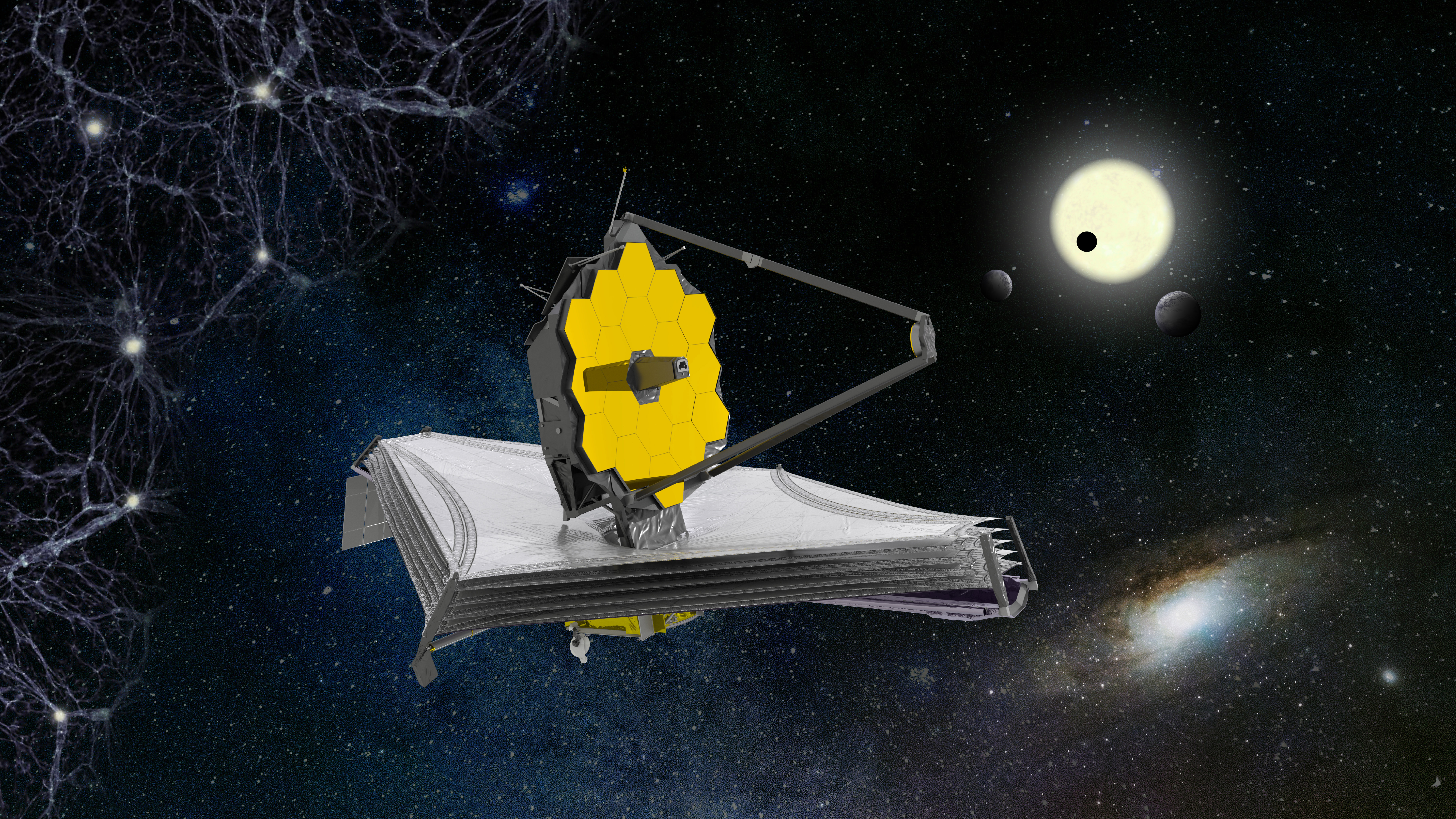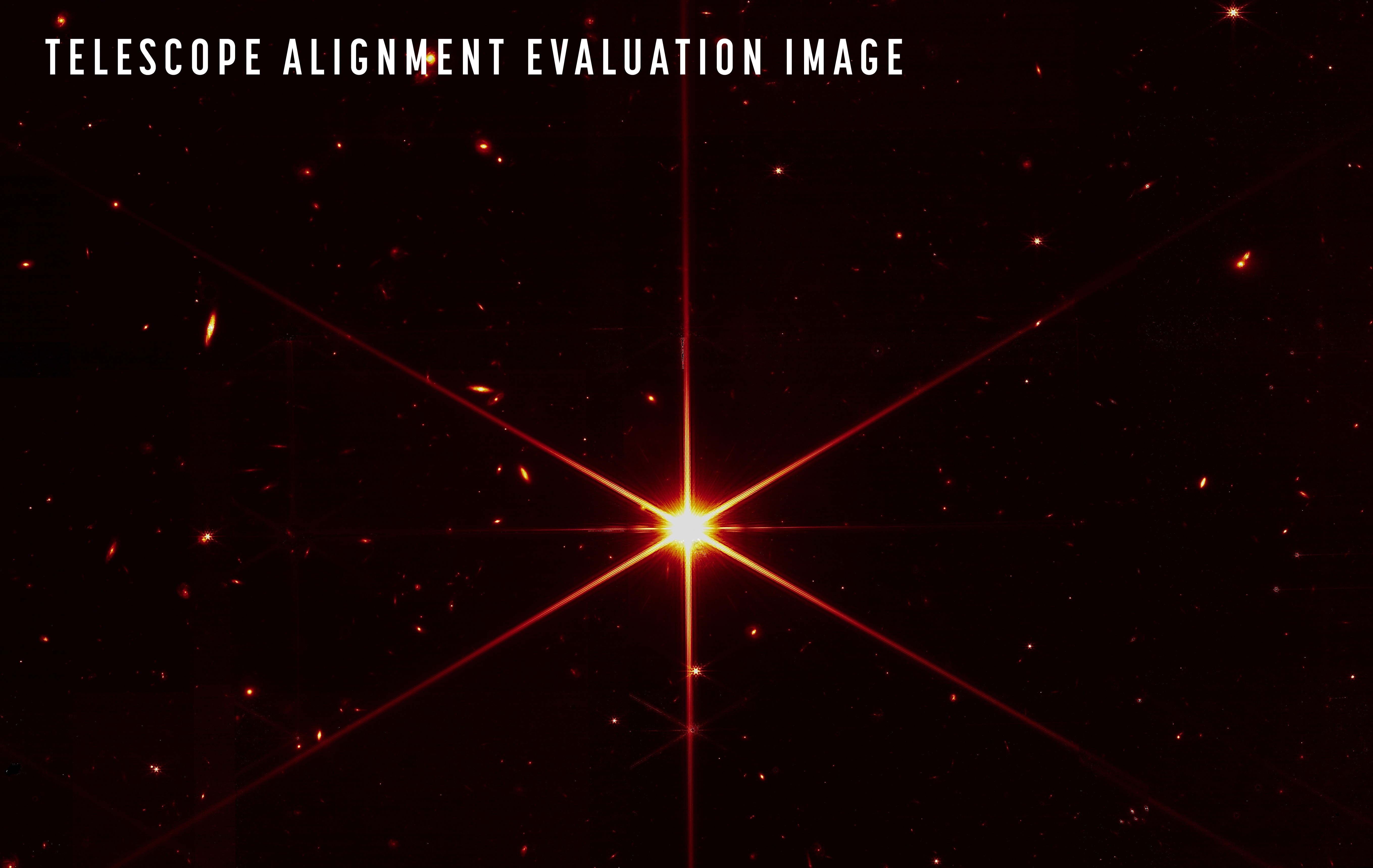Final James Webb Space Telescope instrument reaches super-cold operating temperature
'We spent years practicing for that moment,' team member says of rapidly completing instrument calibration.

The James Webb Space Telescope notched a cool milestone — literally — during its months-long calibration for deep-space observations.
The final instrument aboard the $10 billion James Webb Space Telescope finally achieved its operating temperature of just above absolute zero. The successful cooling ensures that the observatory will be able to probe cosmic objects in infrared light, according to a Wednesday (April 13) statement from NASA's Jet Propulsion Laboratory (JPL) in California, which leads U.S. work on the instrument, called the Mid-Infrared Instrument (MIRI).
The telescope has been cooling ever since its launch on Dec. 25, 2021, bringing it to the frigid temperatures necessary for MIRI to accurately detect infrared light, which manifests as heat. MIRI needs to be at a temperature is a little below 7 degrees Kelvin, which is equivalent to minus 447 degrees Fahrenheit (minus 266 degrees Celsius). And the complex cooling procedures went very well, thanks lots of practice.
"We spent years practicing for that moment, running through the commands and the checks that we did on MIRI," Mike Ressler, project scientist for MIRI at JPL, said in the statement. "It was kind of like a movie script: Everything we were supposed to do was written down and rehearsed. When the test data rolled in, I was ecstatic to see it looked exactly as expected and that we have a healthy instrument."
Live updates: NASA's James Webb Space Telescope mission
Related: How the James Webb Space Telescope works in pictures
The temperature milestone is a key moment in Webb's multi-phase, six-month-long commissioning period to get its mirrors aligned and its instruments ready for deep-space observations. Adjustments must be ongoing as the telescope cools, as sometimes the components behave or align differently amid falling temperatures. But so far, Webb's commissioning has pretty much been going to plan.
MIRI's key challenge was a milestone called the "pinch point," during which the instrument dropped from a slightly higher temperature of 15 Kelvin (minus 433 degrees F, or minus 285 degrees C) to the final super-cold operating temperature. This "pinch point" represents a transition zone during which the cryocooler, which is necessary to get Webb to its final temperature, had the least ability to remove heat.
Get the Space.com Newsletter
Breaking space news, the latest updates on rocket launches, skywatching events and more!
"The MIRI cooler team has poured a lot of hard work into developing the procedure for the pinch point," Analyn Schneider, project manager for MIRI at JPL, said in the same statement. "The team was both excited and nervous going into the critical activity. In the end it was a textbook execution of the procedure, and the cooler performance is even better than expected."
MIRI's cool temperatures are also required to overcome what scientists call "dark current," or the electrical current created by vibrating atoms in the detectors. These small movements can generate false signals in the instrument's data, marring observations.

Just to make sure MIRI is behaving properly, the team plans more test images of stars and other objects to test its calibration and performance. Calibration is also ongoing on Webb's mirrors and three other instruments as the telescope team aims to finish its work by about June.
NASA has said it will hold a "key decision meeting" late in alignment, once the telescope can focus light successfully in each instrument, to confirm the aligning process is complete. Then will come final commissioning.
Providing this all goes to plan, a program of early science (Cycle 1) is expected to start around June, with "Cycle 2" operational science expected to begin in mid-2023.
Follow Elizabeth Howell on Twitter @howellspace. Follow us on Twitter @Spacedotcom and on Facebook.
Join our Space Forums to keep talking space on the latest missions, night sky and more! And if you have a news tip, correction or comment, let us know at: community@space.com.

Elizabeth Howell (she/her), Ph.D., was a staff writer in the spaceflight channel between 2022 and 2024 specializing in Canadian space news. She was contributing writer for Space.com for 10 years from 2012 to 2024. Elizabeth's reporting includes multiple exclusives with the White House, leading world coverage about a lost-and-found space tomato on the International Space Station, witnessing five human spaceflight launches on two continents, flying parabolic, working inside a spacesuit, and participating in a simulated Mars mission. Her latest book, "Why Am I Taller?" (ECW Press, 2022) is co-written with astronaut Dave Williams.









